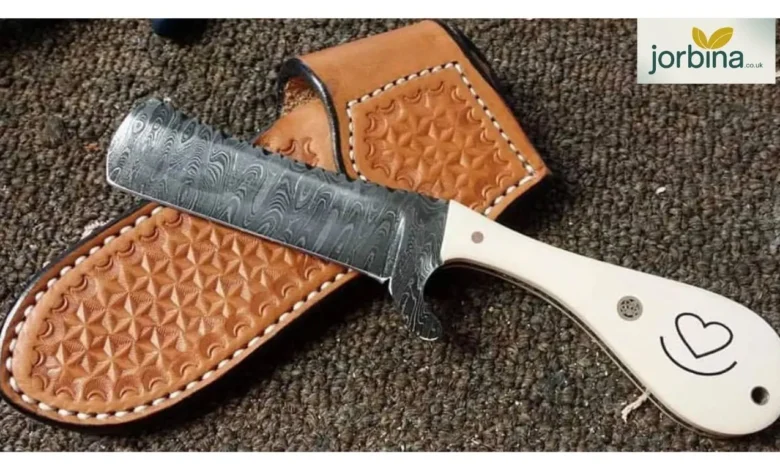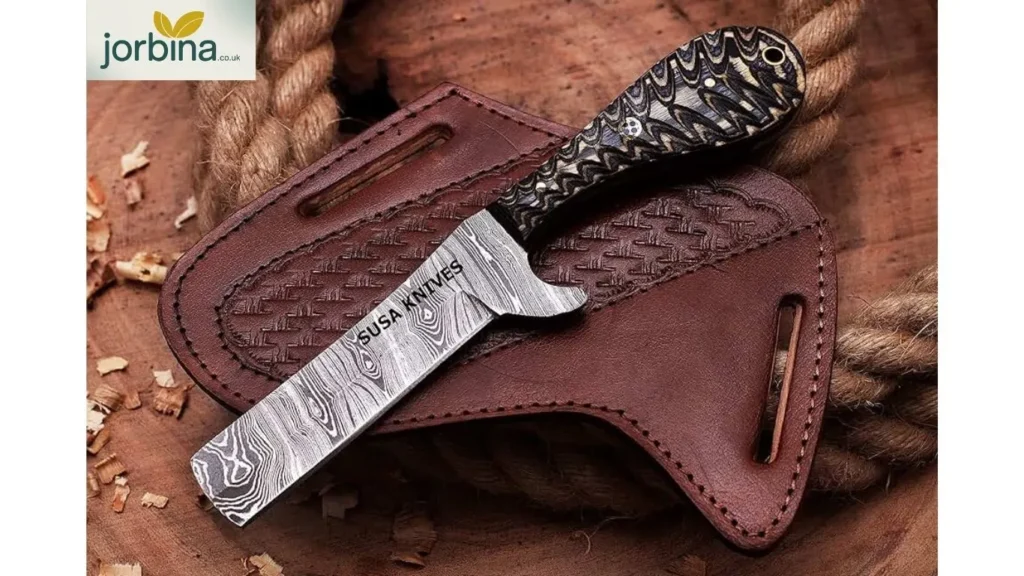The Bull Cutter Knife: Why This Old-School Blade Still Matters Today

Think about the last time you picked up a knife. Did it feel like just another kitchen tool, or did it carry a little weight, a bit of character? Some blades do more than cut; they tell a story. The Bull Cutter Knife is one of those. It’s been around for generations, shaped by hard work on ranches, used by cowboys, and now reimagined for kitchens, collectors, and outdoorsy folks alike.
So here’s the question: why does this particular knife still matter in a world full of fancy chef blades and survival knives? Stick with me, and you’ll see the history, the modern styles, the prices, and even the quirks like finger holes and folding versions. By the end, you’ll understand why people still hunt for the “best bull cutter knife” today.
A Glimpse Back: The Origins of the Bull Cutter Knife
Every knife design reflects a need. In the late 1800s, cattle ranchers and working cowboys needed a blade they could trust for long days on the range. Ropes had to be cut. Leather gear had to be trimmed or fixed. Meals had to be prepared on the go. A fragile knife would fail fast.
The Bull Cutter Knife came out of that environment. Its wide, sturdy blade and simple handle weren’t built for show. They were built for grit. The name itself points to ranch culture. Cattlemen relied on these blades daily, and their reputation spread. Over time, the knife became tied not only to ranch life but also to western identity itself.
What Makes the Bull Cutter Knife Different
You can walk into any store today and see walls of knives, from sleek paring knives to giant cleavers. The Bull Cutter Knife, though, feels different. Its blade has heft without being clumsy. The handle gives control without feeling cramped. It’s a knife you can grab for nearly any task and trust that it will deliver.
Another reason it stands out is its balance between function and durability. While kitchen knives are often specialised, the bull cutter thrives as a do-it-all tool. It’s rugged but not oversized. It has a history but adapts easily to modern uses. That balance is what keeps it alive in both ranch culture and everyday kitchens.
Bull Cutter Knife Price: What to Expect
Now let’s talk numbers, since price is always on people’s minds.
- Entry-level options:Expect to pay around $40 to $60. These versions are simple, often stainless steel, but perfectly functional. They’re great for kitchen work or as starter knives.
- Mid-range picks:Somewhere in the $100 to $200 range, you’ll find higher-quality steel, better balance, and in many cases, handmade touches. These are for people who want something dependable but also a little more refined.
- Premium knives: Over $300, you’re looking at Damascus steel, custom handles, and collector’s editions. These knives are just as much art pieces as tools.
The range is wide, which is part of the charm. Whether you’re a casual buyer or a collector chasing rare models, there’s a bull cutter that fits your budget.
Finding the Best Bull Cutter Knife

The word “best” is tricky because it depends on what you need. A chef might say the best bull cutter is the one who handles meat cleanly and resists staining. A rancher might argue it’s the one that holds up under constant outdoor use. A collector might focus on the rare Damascus versions that look like no other blade.
Here’s the bottom line: the best bull cutter knife is the one that matches your lifestyle. If you’re cooking at home, go with a fixed blade paired with a sheath. If you want something portable, a folding bull cutter will be a better choice. If you care about artistry, go with Damascus.
Folding Bull Cutter Knife: Portable Power
Traditionally, bull cutters were fixed blades. They sat in leather sheaths at a cowboy’s side. But today’s world values portability, which is why folding versions took off.
A folding bull cutter knife gives you the same shape and toughness but in a pocket-sized package. Modern versions come with reliable locking systems, so safety isn’t compromised. For hikers, campers, or even people who just like having a blade handy, this version makes sense.
It’s a reminder that traditions can evolve without losing their soul.
Bull Cutter Knife with Sheath: Tradition and Safety
A sheath might sound like an afterthought, but it’s actually part of the bull cutter’s identity. Cowboys carried these knives in leather sheaths strapped to belts. The sheath kept the blade sharp, protected the owner, and made the knife easy to grab when needed.
Today, you’ll find sheaths made not only from leather but also from nylon and synthetic materials. A bull cutter knife with a sheath is practical for anyone who values safety and storage. It also adds to the traditional Western look that many buyers love.
Bull Cutter Knife with Finger Hole: A Modern Twist
Not all innovations stick, but this one has caught attention. A bull cutter knife with a finger hole gives you more control and stability. You slip a finger through the hole, and suddenly the blade feels almost like an extension of your hand.
It’s especially useful when cutting tougher materials because it minimises slipping. For people who use their knives regularly in outdoor or heavy-duty tasks, this small adjustment makes a noticeable difference.
Everyday Uses in the Kitchen and Outdoors
One reason the Bull Cutter Knife keeps its popularity is its versatility. You don’t have to be on a ranch to appreciate it. In the kitchen, it handles slicing meat, chopping vegetables, and even slicing bread. Outdoors, it can cut rope, prepare firewood, or handle food prep around a campsite.
Instead of buying a drawer full of speciality knives, some people simply keep a bull cutter nearby. That flexibility is worth more than a shiny label.
From Cowboy Camps to Modern Culture
The knife has also carved out a place in culture. Western movies often show characters using blades inspired by bull cutters. Survival shows and outdoor gear lists still highlight them for their durability. Collectors seek out rare models because they tie directly to American frontier history.
Owning one connects you to that legacy. It’s not just about having a sharp blade; it’s about carrying a piece of the cowboy story forward.
Caring for Your Bull Cutter Knife
A good knife is like a good pair of boots: if you take care of it, it will last for decades. Here are simple care tips:
- Wash and dry it after each use. Don’t leave it soaking in water.
- Sharpen it regularly, even lightly, to keep the edge keen.
- Store it in a sheath or on a magnetic strip, not rattling in a drawer.
- For Damascus blades, rub a bit of oil on the blade to prevent rust.
Do these things, and your knife becomes more than a tool; it becomes something you pass down.
Why People Still Seek Out Bull Cutter Knives
When you put all of this together – history, durability, versatility, culture – you see why the knife refuses to fade away. It represents grit, practicality, and tradition. At the same time, it adapts to modern needs with folding versions, finger holes, and updated steels.
The truth is simple: people like owning gear that works and lasts. And when that gear comes with a story, it’s even better.
FAQs
What is a bull cutter knife used for?
It’s used for cutting rope, trimming meat, outdoor chores, and everyday kitchen work. Its all-purpose design makes it useful in many settings.
What is a cowboy cutter?
A cowboy cutter is a style of knife tied to cowboy culture. It was designed to handle ranch tasks like leatherwork, rope cutting, and food prep. The Bull Cutter Knife is one of the most recognised cowboy cutters.
How much does a real Damascus knife cost?
True Damascus knives often start at $150 and can climb well above $500, depending on who makes them and what materials are used.
Are bull cutter knives durable?
Yes. Durability is their signature trait. They were born on ranches where blades couldn’t fail. That toughness continues in modern designs.
What knife did cowboys carry?
Cowboys carried simple but reliable knives like bull cutters or other fixed blades. They weren’t ornamental; they were working tools meant for survival and daily chores.
Closing Thoughts
The Bull Cutter Knife is proof that some designs never lose their edge. From cowboy camps to modern kitchens, it has shown that strength, simplicity, and versatility always matter. Whether you’re looking for an affordable everyday knife, a folding version for the outdoors, or a Damascus piece for your collection, there’s a bull cutter that fits.
Bottom line: it’s not just another knife. It’s a slice of history that still earns its place in pockets, kitchens, and collections around the world.



